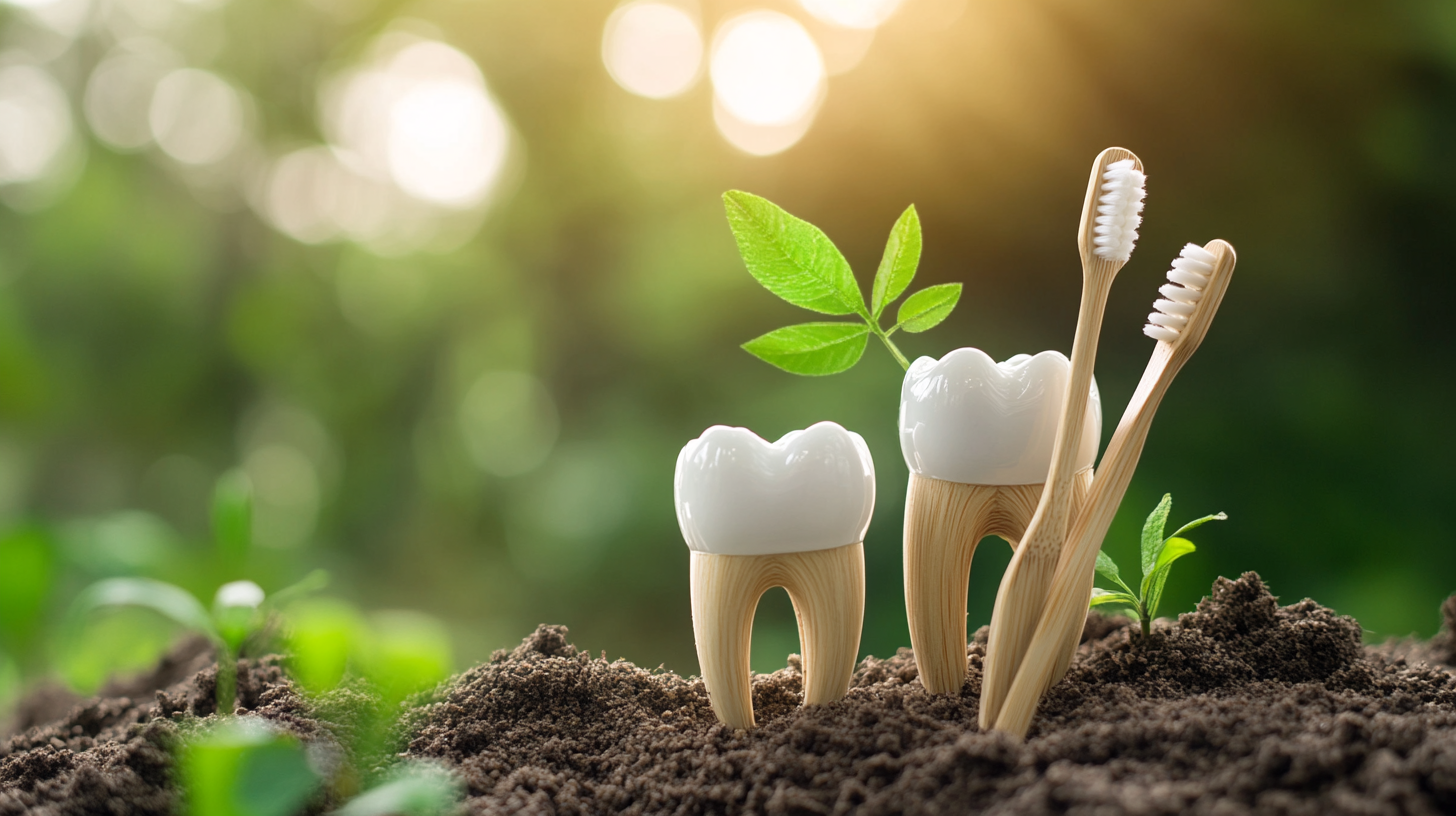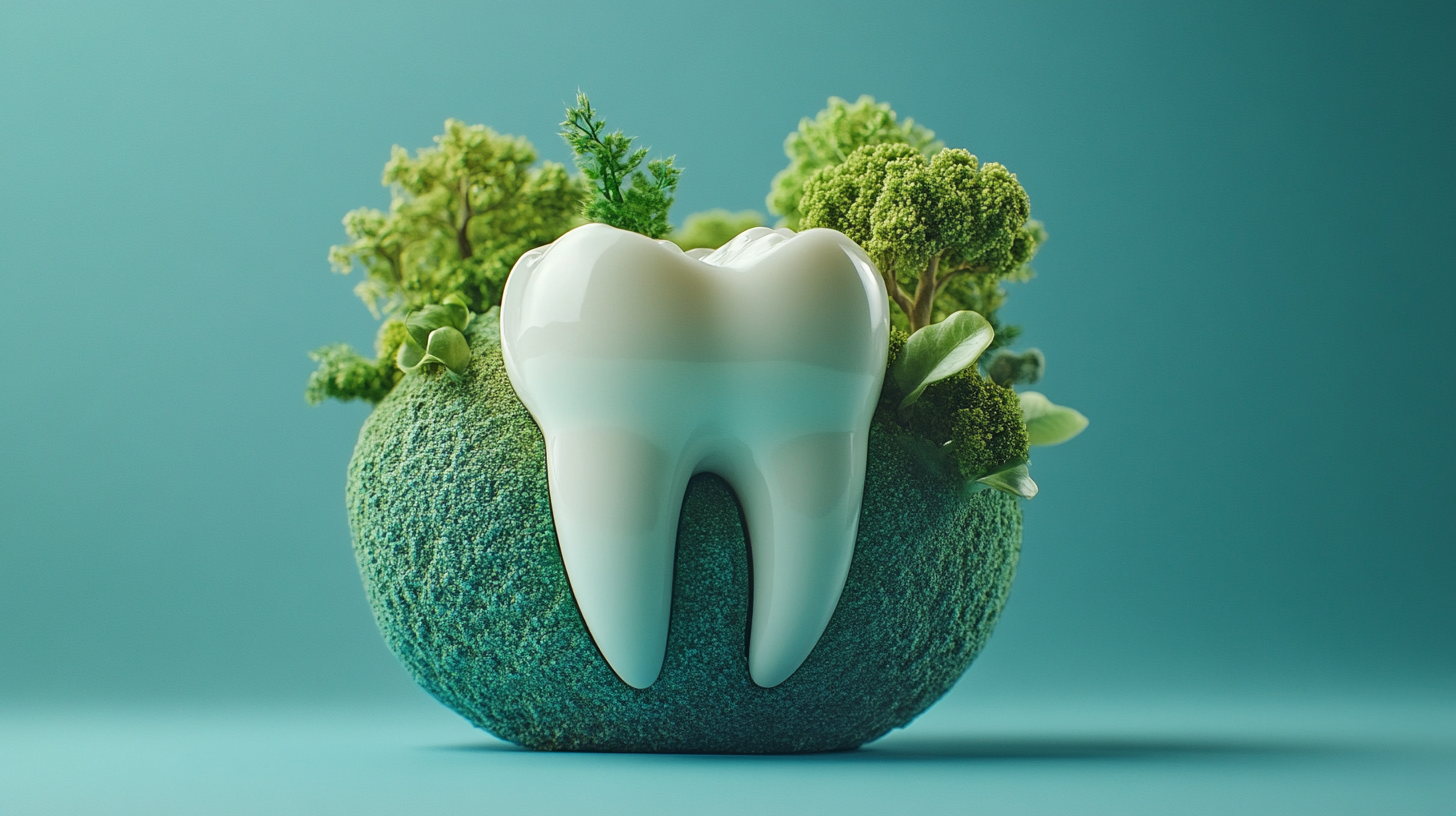2025 Oral Care Trends Shaping Global Procurement Strategies for Sustainable Growth
The oral care industry is undergoing a transformative phase, driven by evolving consumer preferences and an increasing demand for sustainable practices. According to a recent report by Grand View Research, the global oral care market size is expected to reach approximately $54 billion by 2025, reflecting a compound annual growth rate (CAGR) of 5.7%. This growth is largely influenced by heightened awareness of oral hygiene and the importance of preventative care. As consumers prioritize health and sustainability, procurement strategies within the oral care sector must adapt to stay ahead in a competitive landscape.
In 2025, key trends such as eco-friendly packaging, natural ingredients, and digital health solutions are set to reshape global procurement strategies. The emergence of clean oral care products, backed by a Nielsen report indicating that 73% of consumers are willing to pay more for sustainably produced goods, highlights the urgency for brands to align their offerings with consumer values. Companies must navigate these shifts by investing in sustainable sourcing and innovative product development, thereby ensuring long-term growth and responsibility in the oral care market.

The Rise of Eco-Friendly Oral Care Products in the Global Market
The oral care industry is poised for remarkable transformation as eco-friendly products gain traction within the global market. With consumers increasingly prioritizing sustainability, the rise of biodegradable packaging and natural ingredients reflects a growing commitment to environmental stewardship. This shift is not merely a trend but a strategic move that aligns with the broader goals of sustainable growth in procurement strategies across the sector. Recent projections indicate that the oral care market will reach USD 63.3 billion by 2032, with a compound annual growth rate of 5.2% from 2024 to 2032. This growth is being fueled by a surge in demand for eco-conscious products, including innovative solutions like toothpaste tablets and plant-based mouthwashes. In particular, the toothpaste tablets market is expected to witness a significant increase, showcasing a CAGR of 7.5% from 2025 to 2034, as consumers embrace more sustainable alternatives to traditional oral care items. Moreover, the lip care products market is set to grow from USD 2.5 billion in 2023 to USD 4.3 billion by 2033, highlighting the expanding consumer interest in eco-friendly choices. As brands respond to this demand, we can expect an influx of products that not only promise enhanced efficacy but also contribute to a healthier planet. With environmental concerns at the forefront, the oral care landscape is evolving, and companies that prioritize sustainability are likely to gain a competitive edge in the coming years.

Innovations in Sustainable Packaging for Oral Care Items
The oral care industry is witnessing a significant shift towards sustainable packaging solutions as brands innovate to meet the growing demand for eco-friendly products. In 2023, the global beauty and personal care market reached an impressive $570.1 billion, highlighting the increasing consumer awareness surrounding sustainability. Innovations like recyclable toothpaste tubes and eco-friendly toothbrushes are becoming prevalent, showcasing a clear trend towards products that not only promote health but also contribute to environmental stewardship.
Recent advancements in sustainable packaging, such as paper-made toothbrush packaging, are being adopted by companies aiming to reduce plastic waste. These efforts are not merely for compliance but also reflect a strategic pivot as brands seek to engage environmentally conscious consumers. The convergence of oral health and clean beauty is shaping new product lines that emphasize both aesthetic appeal and sustainability, resonating particularly well with younger demographics who prioritize Instagrammable products.
As companies explore digital expansion alongside sustainable initiatives, we are likely to see a portfolio of products that feature naturally derived ingredients and minimal packaging. The demand for such innovations is expected to further drive market growth, with reports indicating a robust market share forecast for dental care products from 2024 to 2032. This evolution in packaging and product development signifies a deeper commitment from brands to contribute positively to the planet while simultaneously meeting the needs of consumers.

The Role of Consumer Preferences in Shaping Procurement Strategies
In the evolving landscape of oral care, consumer preferences are significantly shaping procurement strategies for sustainable growth. The rise of conscientious consumerism has led brands to prioritize sustainability, driven by younger generations like Gen Z who are more likely to support brands that align with their values. According to a recent report, 75% of Gen Z consumers express a preference for brands that demonstrate environmental responsibility, indicating a critical shift in purchasing behavior.
Key opinion leaders (KOLs) play a vital role in influencing these consumer preferences. With the growing impact of social media, KOLs are increasingly utilized in marketing strategies to promote sustainable oral care products. Research suggests that 65% of consumers are more likely to purchase a product endorsed by a KOL they trust. This trend highlights the necessity for procurement teams to not only focus on product quality and pricing but also engage in strategic partnerships with these influencers to enhance brand visibility and authenticity.
Moreover, leveraging big data analytics has become essential for understanding consumer behavior. Insights garnered from big data reveal that a significant portion of purchasing decisions is driven by detailed product information and transparency about sustainability efforts. Procurements that incorporate these insights can better align their strategies with consumer expectations, ensuring they remain competitive in the market. This integration of consumer preference data into procurement processes is crucial for fostering sustainable growth in the oral care industry, tapping into the increasing demand for eco-friendly solutions.

Adapting Supply Chains for Sustainable Oral Care Manufacturing
In the rapidly evolving landscape of oral care, adapting supply chains for sustainable manufacturing is essential for businesses aiming to thrive in 2025 and beyond. As consumer awareness about the environmental impact of products increases, manufacturers must pivot towards eco-friendly practices. This includes sourcing raw materials from sustainable suppliers and prioritizing biodegradable or recyclable packaging. By doing so, companies not only enhance their brand reputation but also meet the growing demand for responsible products.
Moreover, integrating technology into supply chain management can streamline operations and reduce carbon footprints. For instance, data analytics can optimize inventory levels and forecast demand more accurately, minimizing waste and excess. Collaborating with partners who share a commitment to sustainability is also vital. This synergy can lead to innovative solutions that benefit both the environment and the bottom line, ensuring a competitive edge in the global market.
Lastly, it is essential to educate consumers on the importance of sustainable oral care practices. Engaging campaigns that highlight the journey of products from sustainable sourcing to eco-friendly use can foster a stronger connection between brands and consumers. As 2025 approaches, those who prioritize sustainable supply chains will not only contribute to environmental preservation but also align with the expectations of a more conscious consumer base.
Future Technologies Driving Sustainability in Oral Care Solutions
Future technologies are poised to revolutionize the oral care industry, driving sustainability and reshaping global procurement strategies. As consumers increasingly demand eco-friendly products, manufacturers are turning to innovative materials and processes to meet these expectations. One such advancement lies in the development of biodegradable toothbrushes and dental floss made from natural fibers. These alternatives not only reduce plastic waste but also contribute to a circular economy, where products are designed with their end-of-life in mind.
Furthermore, digital technologies play a crucial role in enhancing sustainability within the oral care sector. Smart toothbrushes equipped with sensors and connected applications help consumers better track their oral hygiene habits, leading to improved health outcomes. Additionally, these devices generate valuable data for companies, enabling them to optimize their product offerings and align more closely with consumer needs. This data-driven approach not only fosters loyalty but also supports sustainable growth by streamlining production and reducing excess inventory.
In terms of procurement strategies, companies are increasingly prioritizing partnerships with suppliers who share their commitment to sustainability. This shift is prompting a comprehensive reassessment of supply chains, encouraging a focus on greener materials and responsible sourcing practices. As the landscape of oral care continues to evolve, embracing future technologies will be essential for companies aiming to achieve long-term success while minimizing their environmental impact.

